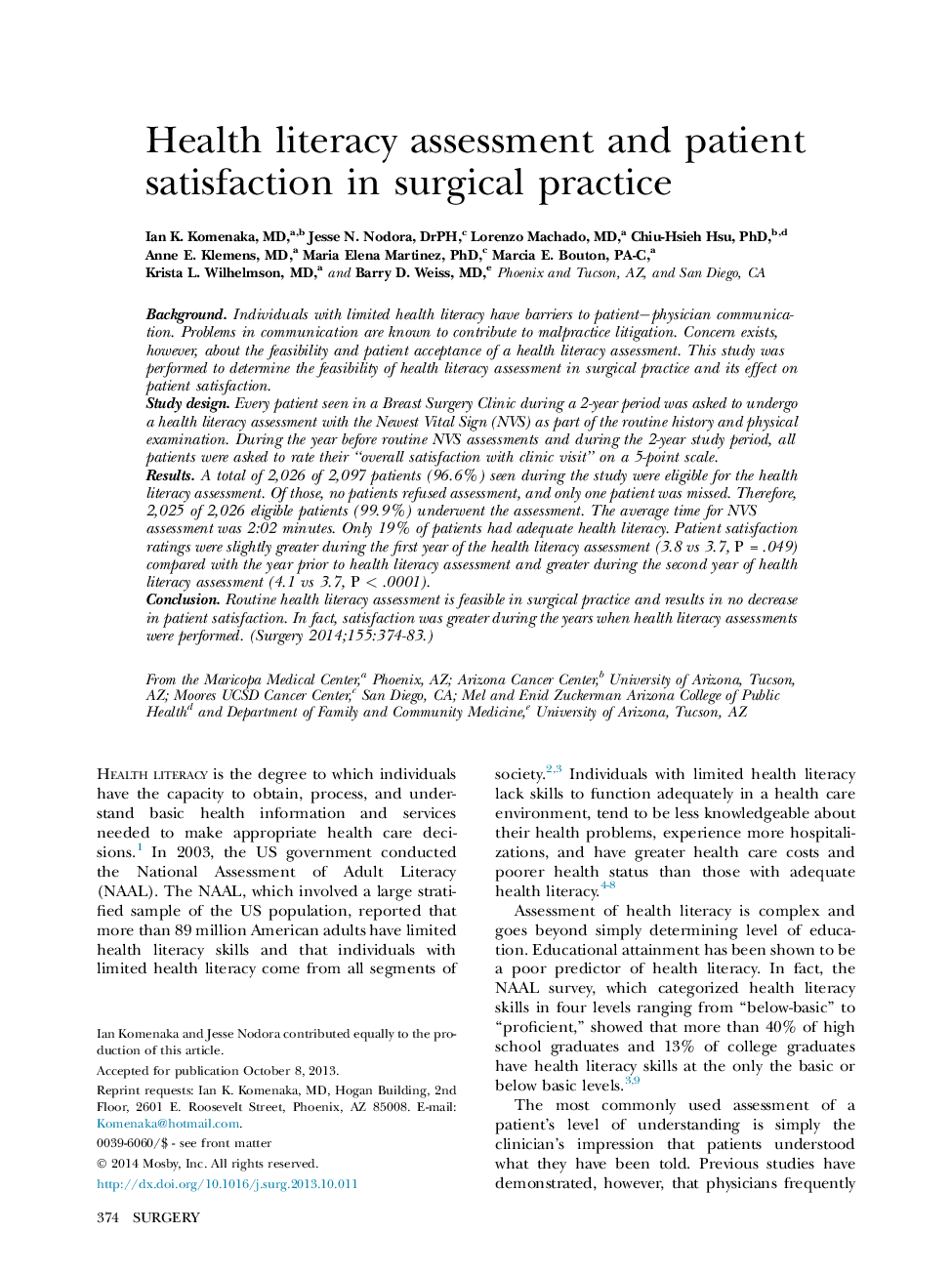| Article ID | Journal | Published Year | Pages | File Type |
|---|---|---|---|---|
| 6255556 | Surgery | 2014 | 10 Pages |
BackgroundIndividuals with limited health literacy have barriers to patientâphysician communication. Problems in communication are known to contribute to malpractice litigation. Concern exists, however, about the feasibility and patient acceptance of a health literacy assessment. This study was performed to determine the feasibility of health literacy assessment in surgical practice and its effect on patient satisfaction.Study designEvery patient seen in a Breast Surgery Clinic during a 2-year period was asked to undergo a health literacy assessment with the Newest Vital Sign (NVS) as part of the routine history and physical examination. During the year before routine NVS assessments and during the 2-year study period, all patients were asked to rate their “overall satisfaction with clinic visit” on a 5-point scale.ResultsA total of 2,026 of 2,097 patients (96.6%) seen during the study were eligible for the health literacy assessment. Of those, no patients refused assessment, and only one patient was missed. Therefore, 2,025 of 2,026 eligible patients (99.9%) underwent the assessment. The average time for NVS assessment was 2:02 minutes. Only 19% of patients had adequate health literacy. Patient satisfaction ratings were slightly greater during the first year of the health literacy assessment (3.8 vs 3.7, P = .049) compared with the year prior to health literacy assessment and greater during the second year of health literacy assessment (4.1 vs 3.7, P < .0001).ConclusionRoutine health literacy assessment is feasible in surgical practice and results in no decrease in patient satisfaction. In fact, satisfaction was greater during the years when health literacy assessments were performed.
